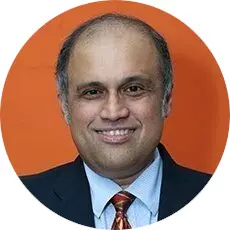
Without health, there’s no wealth. While it’s a cliche and commonly touted saying, it is certainly true. The ability to live a long and healthy life has always been one of the most fundamental human rights, and our society has always strived to work towards improving the same. Yet, massive inequalities in life expectancy are pervasive and persist across the globe. For instance, a baby born today in a high-income nation like Japan or Switzerland can expect to live into their early 80s on average. In contrast, a child born in some of the poorest countries in sub-Saharan Africa may not even survive past 60 years of age.
This staggering 20+ year gap in life expectancy represents one of the greatest injustices of our time. Millions of lives are cut short each year due to poverty, lack of access to quality healthcare, poor nutrition, and the myriad other consequences of inequality. Even within wealthier nations, racial and socioeconomic disparities create a divide, with the affluent enjoying longer lives than the disadvantaged.
In recent decades, there has been substantial progress in global life expectancy, with an estimated average of 72.8 years in 2019 compared to 64.2 years three decades ago. However, significant disparities in life expectancy continue to exist both across and within countries. Socioeconomic status, often measured by income, education, or occupation, plays a crucial role in determining these inequalities. For instance, a study in Norway found that women in the top one percent income bracket could live 8.6 years longer than those in the lowest bracket, and for men, the difference/disparity was 13.8 years.
In the United States, life expectancy varies significantly by race and ethnicity. As of 2021, provisional data show that life expectancy was lowest for American Indian and Alaska Native (AIAN) people at 65.2 years, followed by African American people at 70.8 years. In comparison, Caucasian people had an average life expectancy of 76.4 years, Hispanics at 77.7 years, and Asians the highest at 83.5 years.
Between 2000 and 2019, there were notable changes in life expectancy among different racial and ethnic groups in the U.S. Life expectancy increased most for the African American population (3.9 years), Asian population (2.9 years), and Latino population (2.7 years). The increase in life expectancy for the Caucasian population was more moderate at 1.7 years. Despite these gains, disparities continue to persist.
Research based on data from various sources shows that since 1800, life expectancy has increased significantly in developed countries, from around 55 to 81 years for men and from 57 to 87 for women. Inequality in length of life has also decreased substantially in these countries over time. The reduction in inequality is closely linked to improvements in average life expectancy.
According to UNESCO, there is a strong correlation between educational attainment and life expectancy. For example, in low-income countries, every additional year of schooling is associated with an increase in life expectancy of about 0.58 years for boys and 0.64 years for girls.
This global stage highlights the importance of monitoring and addressing inequality in life expectancy globally to ensure that health outcomes are more equitable across different socioeconomic groups and regions. The factors driving these inequalities are complex, stemming from systemic issues like lack of development, necessity for affordable healthcare, sanitation, environmental degradation, armed conflicts, and the cyclical nature of poverty itself. However, they are not etched in stone – the right policies, investments in public health, and commitment to equitable access to quality healthcare can help turn the tide. Targeted public health interventions and policies aimed at reducing health disparities among different demographic groups and collaboration between public and private sectors will be key, to together achieve our goals of living a longer and healthier life.
 Raj Mehta – Financial Education Instructor
Raj Mehta – Financial Education Instructor

